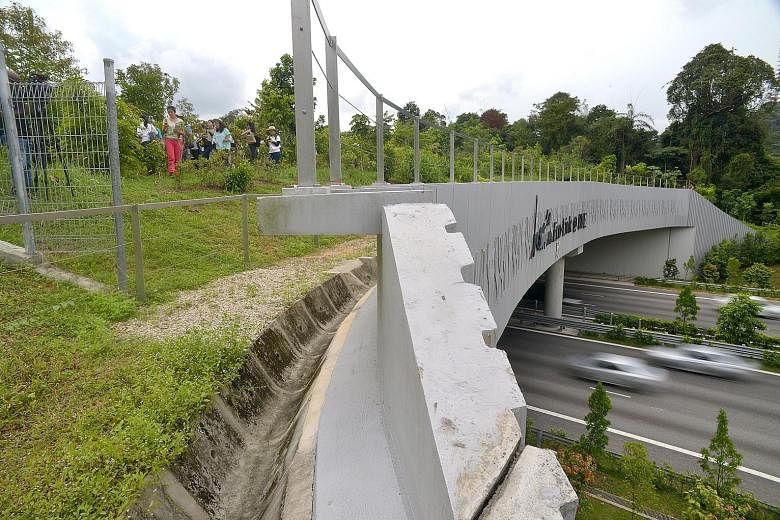The National Parks Board (NParks) has no plans to continue giving guided walks on a wildlife bridge used by rare animals that is otherwise off-limits to members of the public.
A notice on the NParks website said the guided walks on Eco-Link@BKE have been postponed "until further notice", and that the website will be updated if the guided walks resume. BKE refers to the Bukit Timah Expressway.
The walks were last conducted between late 2015 and last January. NParks group director for conservation Wong Tuan Wah said animals such as the critically endangered Sunda pangolin, slender squirrel, common palm civet and various species of birds and snakes have been found using the bridge.
The walks were stopped to limit human impact on the bridge. Apart from these walks, members of the public are not allowed on the bridge.
Said Mr Wong: "In order not to affect the animals' movement patterns and to allow more animals to adapt and use the eco-link, subsequent walks were not scheduled. We are continuing to monitor the animals' movements."
The $16-million bridge, which links the Central Catchment and Bukit Timah nature reserves, was completed in 2013.
Human access to the bridge was restricted to allow vegetation to grow and let wildlife get used to the bridge. In November 2015, NParks said it would organise eight guided walks over the next two months.
At the time, there were plans to make the walks a monthly event.
Each walk was capped at 20 people and aimed to help people learn about the different kinds of animals that use the link, and interesting facts about both nature reserves.
The bridge allows animals to move between the Bukit Timah and Central Catchment nature reserves. This is important because the island's nature areas are fragmented by urban development, unlike in countries that have rolling acres of forests.
Being able to move from forest to forest will help animals feed and breed without becoming isolated.
However, the presence of humans on the bridge could deter animals from using the bridge. That is why people are not allowed to visit the bridge as they would any other park or nature reserve.
Mr Wong said NParks officers have caught people trying to visit the eco-link on their own.
He said: "We have issued advisories to remind them not to do so. We would like to urge visitors to play their part in the conservation of our native biodiversity by refraining from entering restricted areas, so as to allow rare native species to establish themselves.
"There are many designated trails in the nature reserves, from which biodiversity can be observed, and we advise visitors to stay on them. This will also prevent visitors from getting lost."
Conservationist Tony O'Dempsey said he welcomed the decision by NParks to stop the guided walks, saying it is best to minimise the human footprint on the bridge.
He said: "Native animals are shy and will always avoid humans. That is why we should minimise human presence there...
"The reason given for not continuing the walks is itself a very good reason not to have started them in the first place."


